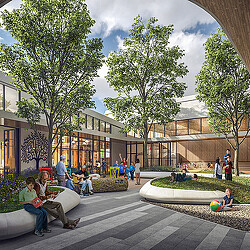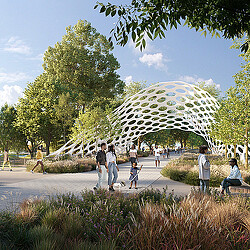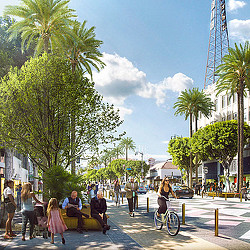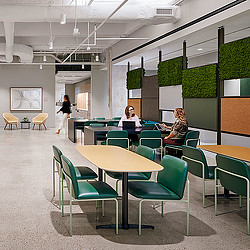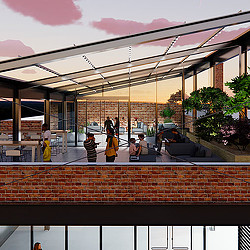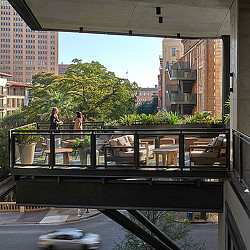Designing Safe, Walkable Cities for Future Generations of Children
Thoughtful urban design can transform cities into vibrant, inclusive spaces where children can thrive, connect, and grow.
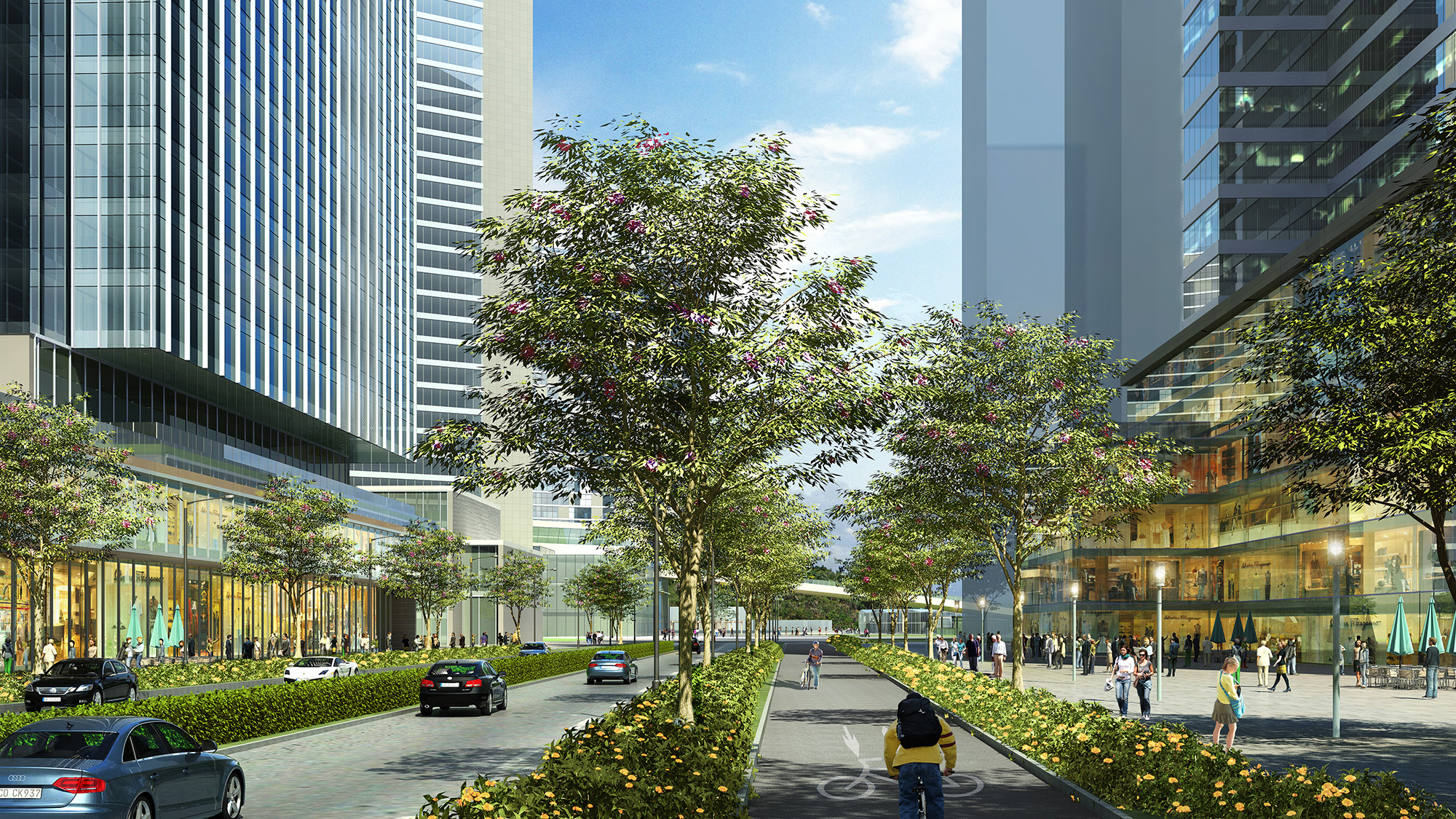
Anxiety levels are on the rise in major cities. Our 2024 City Pulse Survey identified that while their cities supported individual well-being, anxiety levels rose in Austin, London, Mexico City, and New York, ranging from 9-34% increase as compared to 2021 data. This aligns with the Surgeon General’s latest warnings that, following the pandemic-induced isolation, loneliness has led to a greater decrease in health outcomes than smoking.
The good news is that loneliness can be combatted by creating environments that foster social connections. Moreover, there’s a positive business case for it. Families are attracted to communities where they see safe walking and biking paths, as they provide greater safety for their children.
According to Dylan Jones, global leader of Gensler’s Mobility & Transportation practice, “Children are the engine of healthy communities and social infrastructure.” Families spur social gatherings ranging from soccer games to movie nights to concerts in the park. Designing urban communities that appeal to families enhances real estate value and catalyzes neighborhood prosperity.
Best in class neighborhood design — where people feel that their communities are beautiful, authentic, clean, and pedestrian-friendly — is a leading factor for attracting and retaining residents. Young adults and families are increasingly drawn to urban living for the availability of safer environments, better access to education, healthcare, and social networks, which collectively contribute to more supportive social infrastructure. This can serve as a wellness strategy that mitigates feelings of loneliness for the whole family. By maximizing community walkability, families gain health benefits from the physical activity. Local retail businesses can also perceive economic benefits due to increased consumer pedestrian traffic.
Designing Urban Communities with Children at the Heart
Another characteristic of highly desirable urban communities is the access to quality educational opportunities within the neighborhood. This includes cultural amenities, parks, and recreational facilities, which can enhance neighborhoods and attract families who are looking to raise children in vibrant and supportive communities.
Formal education access is also important. Recent data suggests a positive correlation between the quality of public schools in U.S. cities and population growth. Cities with highly rated public schools, like Seattle, often experience increased population growth, making them more appealing to young families.
Moreover, areas with higher-quality education tend to have better economic prospects, which further attracts people seeking long-term stability and opportunities for their children. Gensler’s 2024 City Pulse Survey reaffirmed this finding, indicating that employment opportunities and job/career growth are an additional leading factor for what makes people want to stay in their cities.
More City Pulse respondents in 2023 felt their city was “too big.” Today’s city dwellers want to be located closer to work, errands, shopping, and leisure. Families indicate an increased desire for cities that embrace cultural heritage and that allow for inner city walkability as a family unit — with the caveat that streetscapes should be without noise or dense crowds. The 20-minute city provides the greatest opportunities to right-size the city for families when they also anticipate child maneuverability.
Designing for Human Powered Mobility at the Family Scale
Children are our most vulnerable population. Urban planning plays a crucial role in enhancing children’s mobility and safety, which are essential for their overall well-being. Intentional urban design strategies have a profound impact on children’s overall well-being by encouraging physical activity and facilitating social interactions. Designing spaces like parks and playgrounds encourages children to engage in physical activities, helping to combat sedentary lifestyles and childhood obesity.
Meanwhile, public spaces also offer opportunities for social interactions, helping children build friendships and develop essential social skills. As they navigate within these spaces, children learn crucial skills such as perspective-taking, understanding body language, and reacting to others’ behavior, which are vital for their overall development.
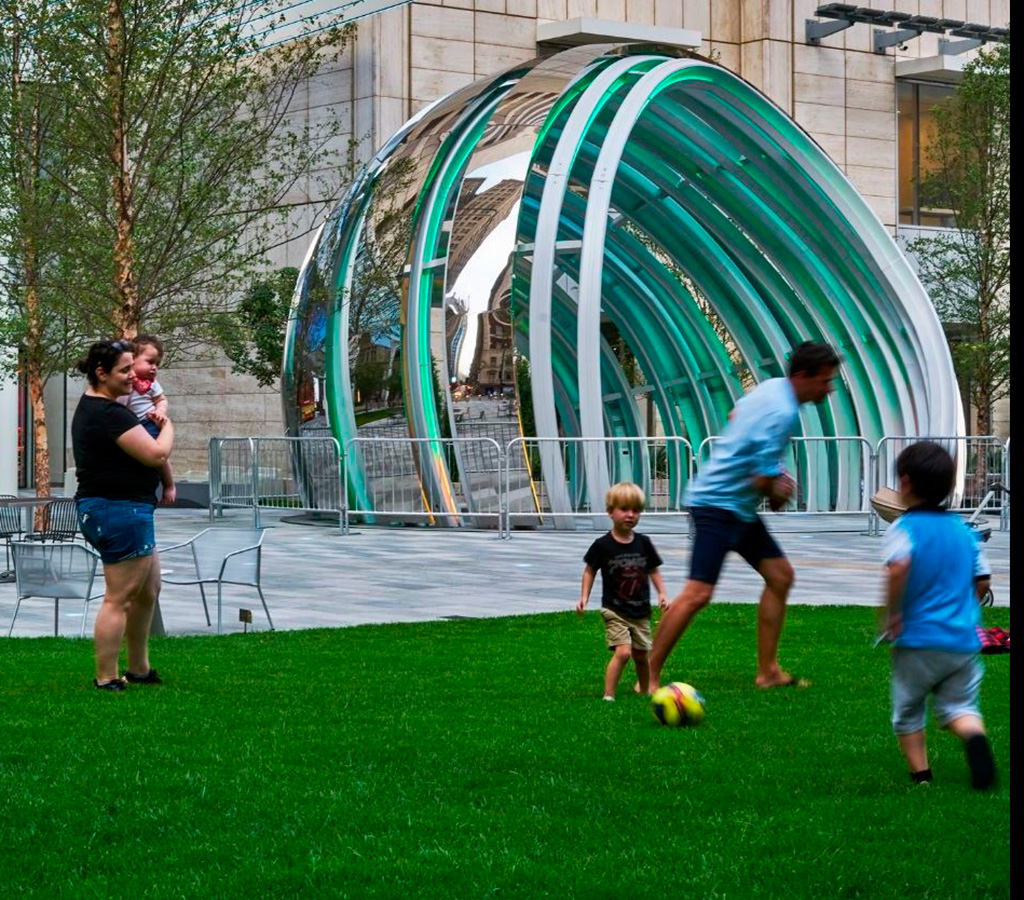
Three Fundamental Concepts in Transit Mobility
To be successful, urban design must support a wide range of transportation practices. This allows community members of all demographics, abilities, and ages to engage in different ways that suit their lifestyles. It provides for variety, diversity, and inclusivity.
Active transportation describes any form of human-powered transit, such as walking, bicycling, or skating. Research indicates that children who are physically active through “active transportation” to school experience higher academic performance, improved attention, alertness, and cognitive abilities. These children also report higher levels of happiness, excitement, and relaxation, along with lower stress levels during the school day.
Micromobility is a term used to denote travel by anything that is battery powered. This might include e-bikes, electric skateboards, electric scooters, or hoverboards. A recent study by the International Journal of Behavioral Nutrition and Physical Activity among 1,415 survey participants in Europe and North America found that participants benefited from more exercise by using e-bikes as compared to a traditional bicycle.
Paths are the term used to denote the safe and accessible lane for human powered mobility. Active transportation networks can be used to create safe routes that expand a child’s reach and their ability to connect with others. Creating safe routes for children to travel is crucial in promoting their physical activity and overall safety, and helps create a close-knit, traversable community.
Ideal Walking Distance
The distance from elementary and high schools to neighboring residential zones can serve as a metric for the successful planning of a 20-minute city. Living more than 1 mile (1.6 km) from school is often deemed too far to walk, which can inhibit the quantity of people who make activity a part of their daily routine. While any walking contributes to 60-minute daily physical activity guidelines for children, walking to and from school is one of the simplest ways to meet that goal. Walking to school can accumulate between 15-45 minutes of daily physical activity, significantly boosting children’s overall physical health.
Active travel, such as walking or biking, is a vital source of physical activity. It improves metabolism, cardiorespiratory fitness, and helps maintain a healthy weight and BMI. Children who walk to school are more likely to engage in other forms of physical activity, such as organized sports and unstructured active play.
Research shows that children who engage in human-powered mobility routes to school tend to have fewer psychosomatic symptoms (e.g., headaches, stomachaches, feeling low, irritability, and sleep difficulties) compared to those who use passive modes of transport (like cars or buses). Promoting active transport to school could be a beneficial public health strategy to improve children’s physical and mental well-being.
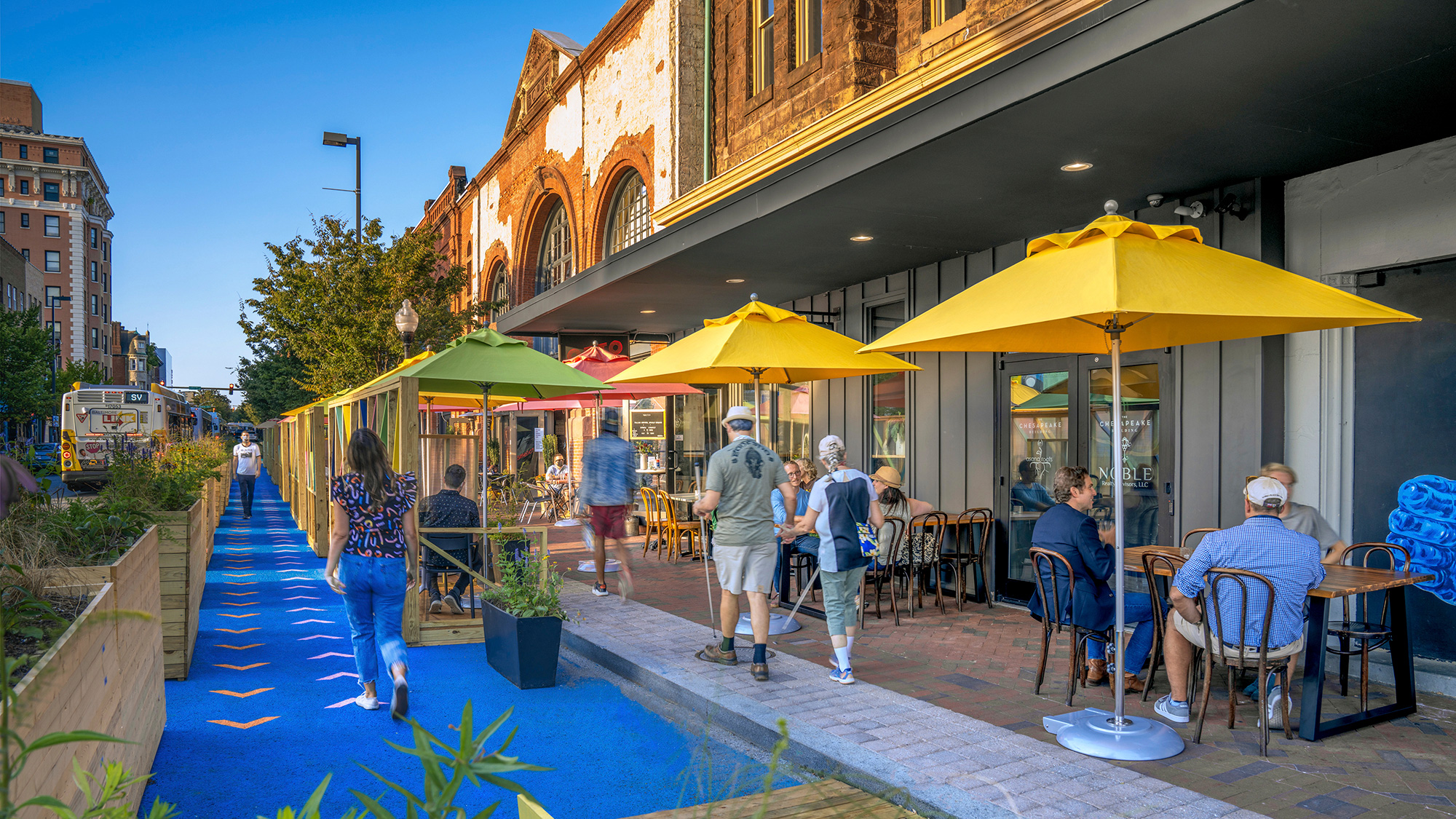
Seven Concepts for Safety and Accessibility
The number one threat to a child’s health is accidents or unintentional injuries. Child safety therefore must be the urban planner’s number one priority. Elements that support child safety, such as protected bike lanes and well-designed sidewalks, are essential to gaining the health benefits of physical activity while encouraging children to walk or bike to school. The 20-minute city concept advocates for neighborhoods where all essential services are within a short walk or bike ride, reducing reliance on cars and fostering safer streets for kids.
-
Separation and Protection
- Protected Bike Lanes: These lanes should be physically separated from vehicle traffic using barriers such as bollards, curbs, or planters. Protected bike lanes are significantly safer than painted lanes, reducing accidents and encouraging more people to cycle.
- Dedicated Sidewalks: Sidewalks should be clearly distinct from bike lanes and roadways, ensuring that pedestrians and cyclists have their own spaces. This reduces conflicts and improves safety for both groups.
-
Width and Space Allocation
- Adequate Width: Bike lanes should be wide enough to accommodate various types of cyclists, including those on cargo bikes or with trailers. Generally, a width of 5-7 feet is recommended for single-direction lanes and 8-12 feet for two-way lanes.
- Sidewalk Width: Sidewalks should be wide enough to allow for comfortable pedestrian flow, including space for street furniture, trees, and other amenities. In busy areas, sidewalks should be at least 8-12 feet wide.
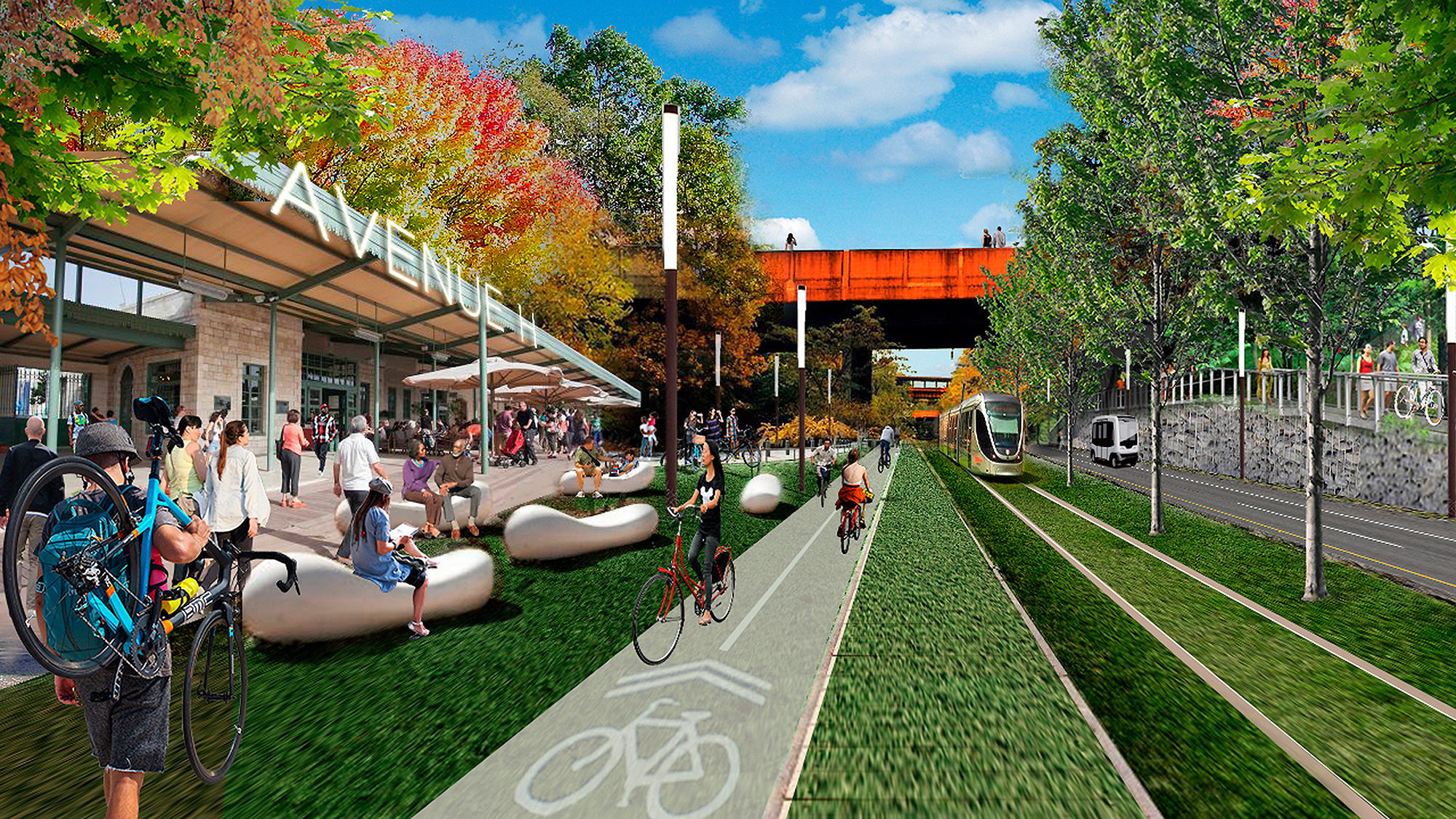
-
Intersection Design
- Protected Intersections: These designs extend the protection of bike lanes into intersections, where most accidents occur. Features like corner safety islands, bike-specific traffic signals, and clear markings help reduce conflicts between vehicles and cyclists.
- Raised Crosswalks: These make pedestrians more visible to drivers and encourage vehicles to slow down when approaching intersections. Raised crosswalks can also act as speed reducers.
-
Connectivity and Accessibility
- Network Connectivity: Bike lanes and sidewalks should be part of a connected network that provides direct routes to key destinations such as schools, parks, and commercial areas. Gaps in the network can discourage use and reduce overall safety.
- Accessibility: Sidewalks and bike lanes must comply with ADA standards, ensuring that they are accessible to all users, including those with disabilities. This includes features like curb ramps and tactile paving.
-
Maintenance and Lighting
- Regular Maintenance: Keeping bike lanes and sidewalks clear of debris, snow, and water is crucial for safety. Regular maintenance also includes repairing cracks and other surface issues that can cause accidents.
- Adequate Lighting: Well-lit paths improve safety for both cyclists and pedestrians, especially at night. Lighting should be consistent and designed to minimize glare while providing sufficient visibility.
-
Wayfinding and Signage
- Clear Signage: Directional signs, markings, and signals specifically for cyclists and pedestrians help guide users safely through complex areas. Consistent and intuitive wayfinding is key to encouraging the use of bike lanes and sidewalks.
- Bilingual or Symbol-Based Signs: In areas with diverse populations, using universally understood symbols or multiple languages can make signage more accessible.
-
Green Infrastructure
- Bioswales and Green Buffers: Integrating green infrastructure like bioswales, tree pits, and vegetative buffers between bike lanes or sidewalks and roads can manage stormwater, reduce urban heat, and improve aesthetics.
- Shade and Shelter: Planting trees or installing shelters along sidewalks and bike paths can provide shade and protection from the elements, encouraging more year-round use.
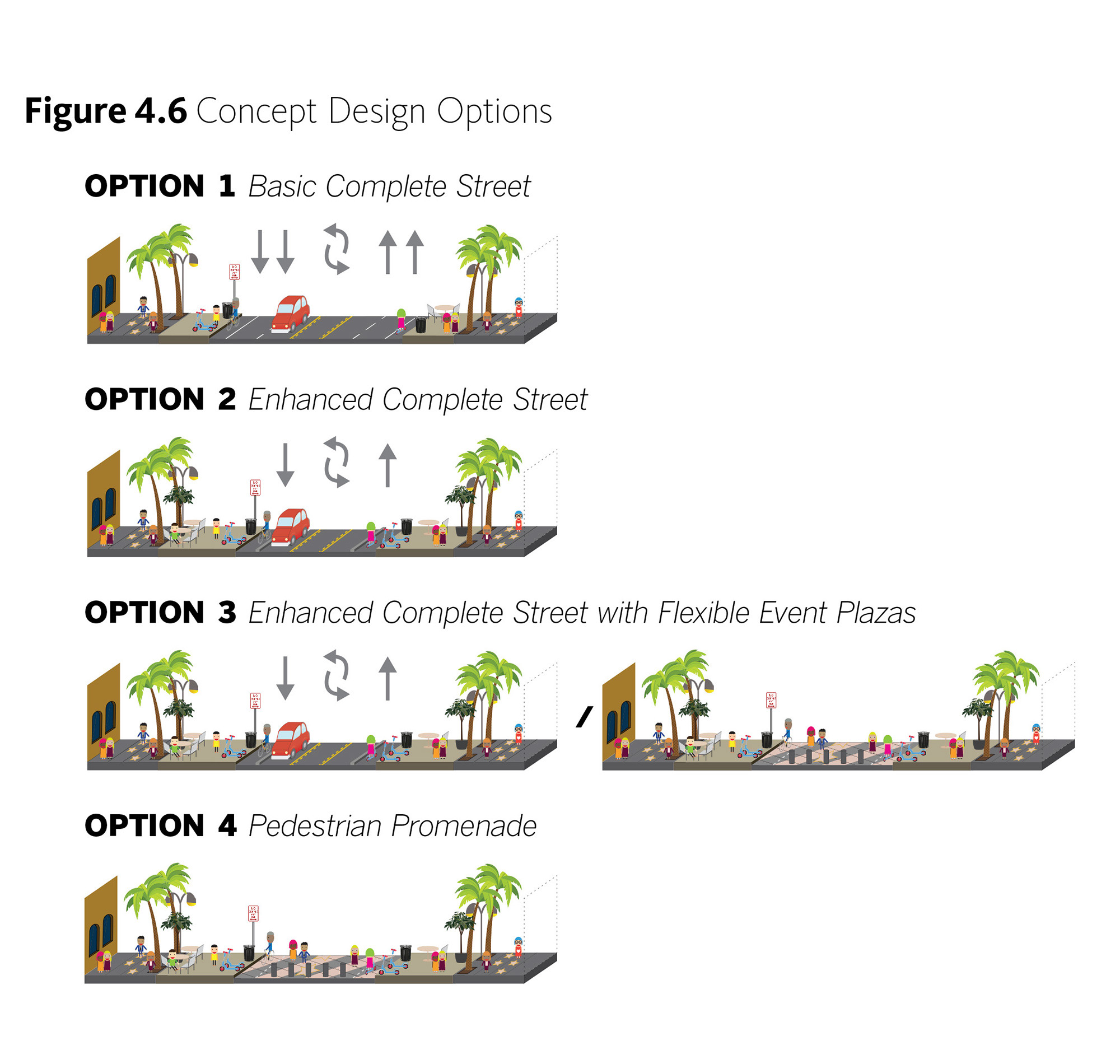
Prosperous Communities Begin with Safe Streets for Kids and the 20-Minute City
Urban planners have an incredible opportunity to design cities that infuse health and wellness into our every day lives. This begins with creating safe paths for families and children to connect with various neighborhood amenities. By focusing on human-powered mobility, we can foster social networking and engagement, which brings neighbors together and builds trust. We can create a better world through the power of design. We can create communities that favor activations versus isolation. We can create communities that heal.
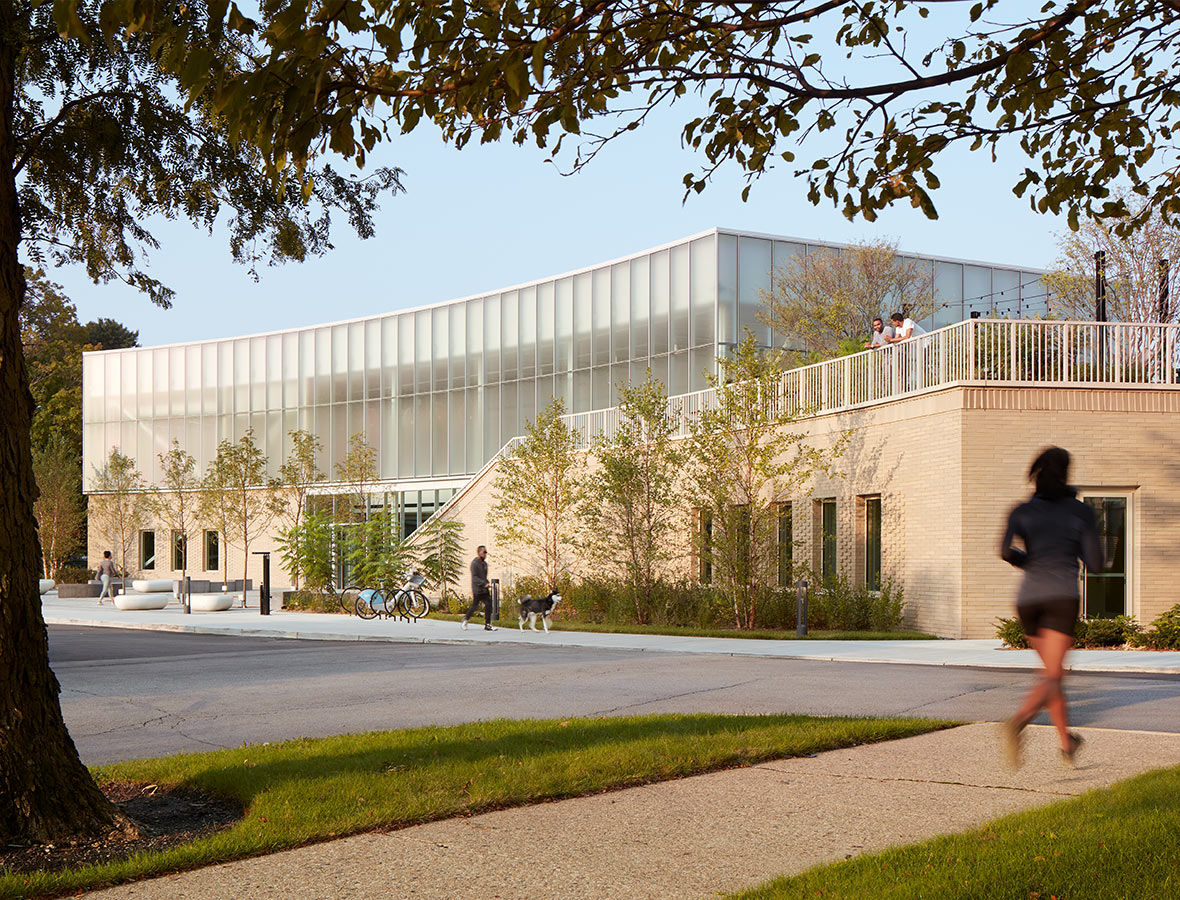
For media inquiries, email .


